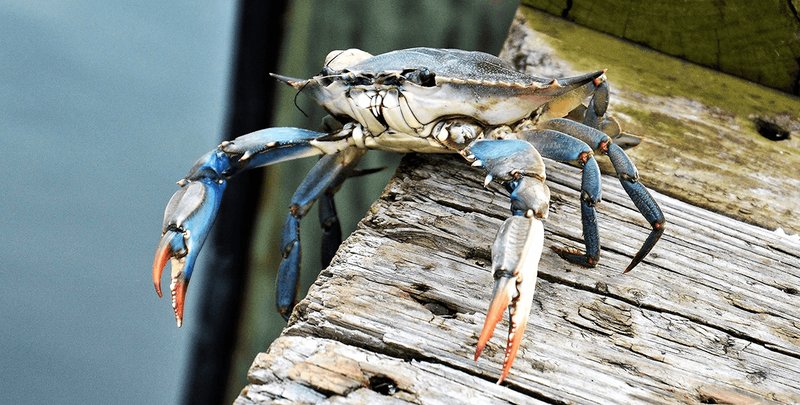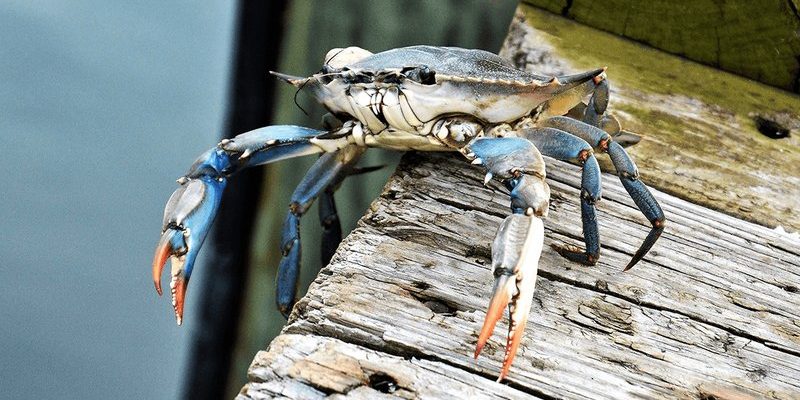
Understanding the dynamics of human interaction with blue crabs can be a bit like peeling an onion. There are layers to their behavior, habitat, and the best practices for safely engaging with them. Whether you’re a seasoned fisherman or just curious about marine life, it’s important to approach blue crabs with respect and awareness. By the end of this article, you’ll know how to interact with these creatures safely, and maybe even gain a newfound appreciation for their role in nature.
Getting to Know Blue Crabs
Blue crabs, scientifically known as *Callinectes sapidus*, are found along the Atlantic coast of the United States, mostly in brackish waters—the kind that’s a mix of salt and fresh water. These crabs are called “blue” due to the striking color of their claws. But they’re not just a pretty face! Blue crabs are highly adaptable and can thrive in various environments, from estuaries to salt marshes.
One of the most interesting things about blue crabs is their life cycle. They undergo several molts as they grow, shedding their hard shells to make way for a new one. This growth process is essential, and it happens multiple times throughout their lives. You can think of it as a teenager going through multiple growth spurts! Understanding this helps us appreciate why they might be a bit feisty during certain times of the year—like when they’re just about to molt.
Blue crabs are also opportunistic feeders. They’ll munch on anything from small fish to plant matter. This diverse diet allows them to play a vital role in the ecosystem. By keeping the balance between various species, they help maintain healthy aquatic environments. So, when you’re thinking about how to interact with blue crabs, remember that they’re not just a seafood option; they’re a vital part of their ecosystem.
Is It Safe to Approach Blue Crabs?
Now, about safety—let’s get into the nitty-gritty. Interacting with blue crabs isn’t inherently dangerous, but there are some precautions to keep in mind. These crabs have sharp pincers that they use for defense and capturing food. If they feel threatened, they might pinch, and trust me, that can hurt! So, if you find yourself face-to-face with a blue crab, it’s essential to approach it calmly.
First things first, make sure to approach slowly. Sudden movements can startle them, causing them to react defensively. It’s best to observe them from a distance when possible. If you’re fishing or crabbing, gently scoop them up with a net or your hands, keeping your fingers away from their claws.
Another tip is to learn the signs of aggression. If a blue crab is waving its claws or trying to back up, it might be best to give it some space. You might notice them raising their claws high, which is a classic warning sign. It’s kind of like a kid throwing a tantrum—best to avoid escalation and find a way to calm things down!
Best Practices for Handling Blue Crabs
If you decide to handle a blue crab, follow these best practices for a successful and safe interaction:
- Wear gloves: This adds an extra layer of protection against pinches and can be useful if you’re handling multiple crabs.
- Pick them up from the back: Instead of grabbing their claws, gently hold the crab from behind the carapace (the hard shell) to avoid getting pinched.
- Keep them low to the ground: If they do escape your grasp, it’s better for them to fall a short distance rather than land on a hard surface.
- Be mindful of their size: Larger crabs are likely stronger and can pinch harder, so adjust your handling technique accordingly.
Remember, it’s all about being respectful of their space and understanding their natural behaviors. If you treat them well, the blue crab will likely be much less inclined to show its pinchers!
Environmental Considerations
When thinking about interacting with blue crabs, we should also consider the environment they live in. Blue crabs thrive in estuarine habitats, which are essential for their life cycle. Unfortunately, these environments are threatened by pollution, habitat loss, and climate change. So, when you’re out enjoying nature, there are a few simple steps you can take to help protect their environment.
First, always dispose of waste properly. Trash in the water can be harmful to marine life, including blue crabs. It’s a good habit to pick up litter when you see it, even if it’s not yours. Second, if you’re fishing, use sustainable practices, such as following local regulations on crab harvesting. Respect size limits and closed seasons to help maintain healthy populations.
Additionally, consider participating in local clean-up events. Many coastal communities organize beach clean-ups to collect trash and debris that can hurt marine habitats. Not only will you be helping the environment, but you’ll also be gaining a deeper connection to the ecosystem around you.
Blue Crab Behavior and Interaction Tips
Understanding blue crab behavior can significantly enhance your experience while interacting with them. These crabs are quite territorial, meaning they can get defensive if they feel their space is invaded. When they’re in a group, you might notice some gentle jostling—this is their way of establishing dominance without causing injury. So if you spot a bunch of crabs hanging out together, it’s best to observe and not disturb them.
You might also find that blue crabs are more active during specific times of the day. Generally, they are easier to catch during the early morning or late afternoon. Much like us, they have their peak energy times! If you’re crabbing, try to plan your outings around these hours for the best chances.
And here’s a fun fact: Did you know that blue crabs can actually swim? They’re quite graceful in the water, using their back legs like paddles to glide along. So while it’s important to approach them on land with care, remember that they’re much more at home in their watery habitat.
Interacting with blue crabs can be a rewarding experience if approached with respect and knowledge. These creatures are more than just a meal; they play a vital role in our coastal ecosystems. By understanding their behavior and following safety guidelines, you can safely engage with them and appreciate their beauty.
So, the next time you think about blue crabs, remember that it’s not just about catching dinner. It’s about understanding these creatures and doing your part to protect their environment. As you explore coastal areas, take a moment to observe these fascinating crabs in their natural habitat. You’ll find that the world of blue crabs is rich with wonder, and with a little mindfulness, we can enjoy them safely and responsibly.

